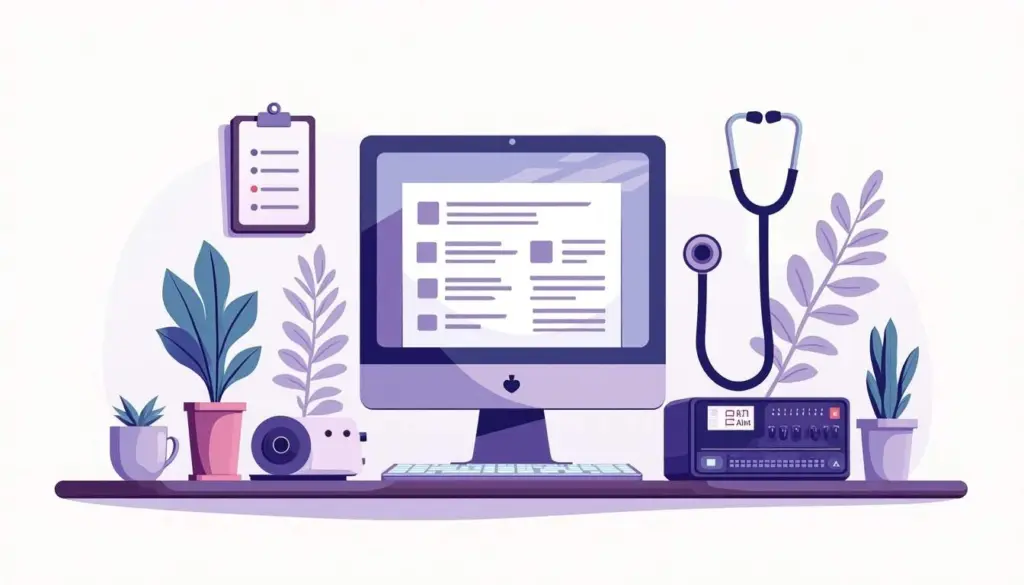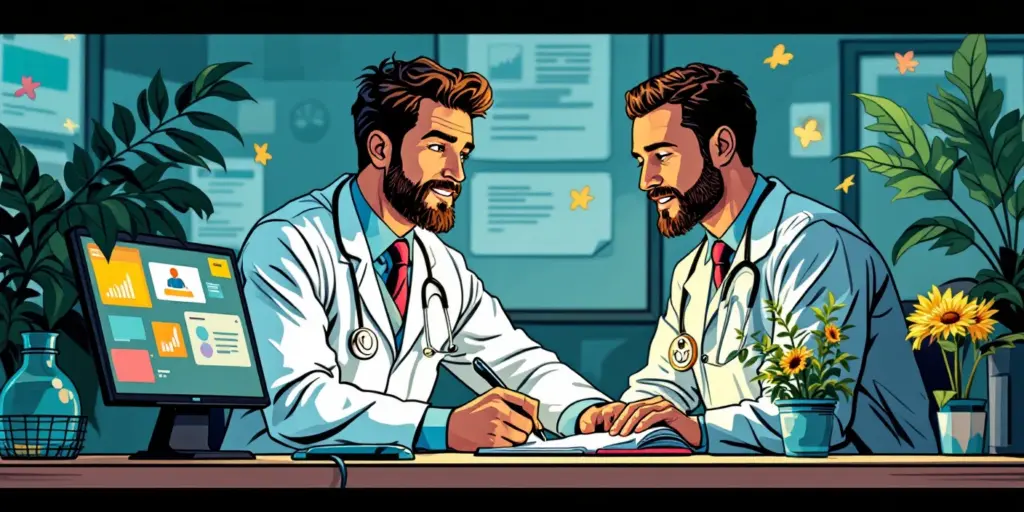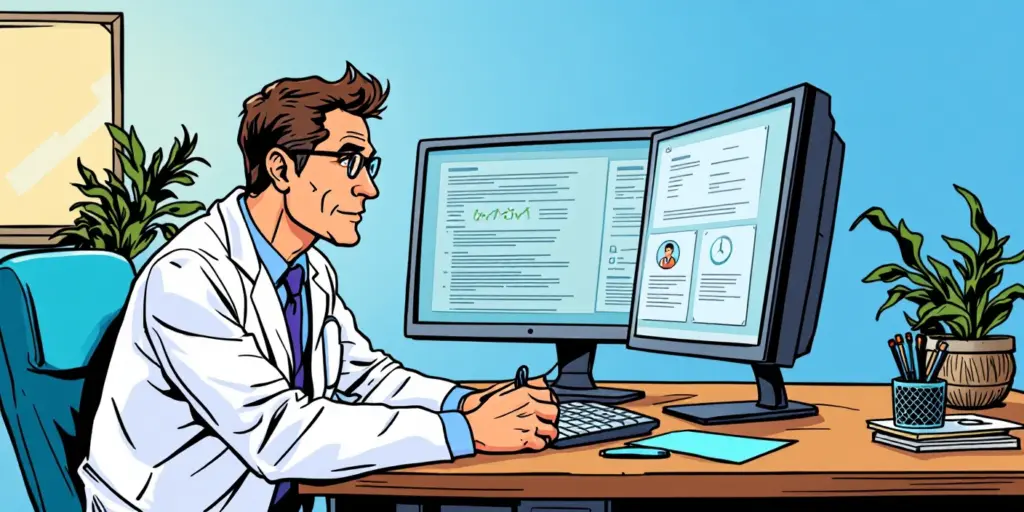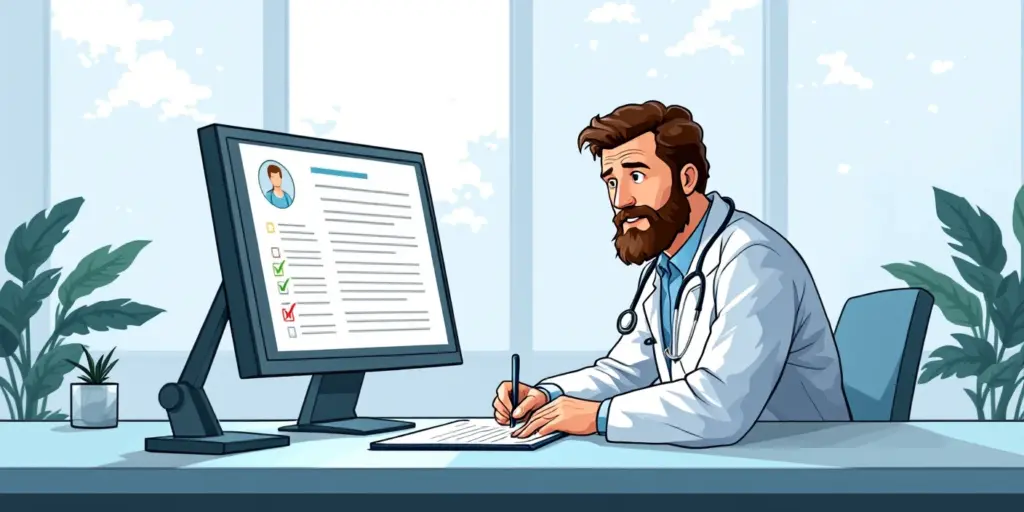What Is Medical Transcription? A Comprehensive Guide
09 Nov 2025 By: Vlade Legaspi
Updated

Imagine a doctor finishing a patient consultation, dictating notes into a microphone, and moments later, those spoken words transform into a clear, accurate medical record. This seamless process is the essence of what is medical transcription, a vital link between healthcare providers and patient documentation.
The Role of Medical Transcription in Healthcare

What is medical transcription? It’s the job of taking voice-recorded medical reports that doctors create and changing them into written documents. This covers patient histories, discharge summaries, operation notes, and consultation reports. Accuracy and clarity really count for a lot. These records help shape future patient care. They end up as part of the patient’s official file.
Skilled transcriptionists power this work. They listen closely, know medical terms, and ensure each record is error-free. Their role needs strong typing and a deep grasp of healthcare terms and rules. Many focus on areas like radiology or cardiology to boost their work quality even more.
Why Accuracy Matters
Errors in what is medical transcription can cause serious harm. One wrong word or dose may lead to misdiagnosis or unsafe treatment. For instance, mixing up “hypoglycemia” with “hyperglycemia” can change care plans completely.
To avoid this, transcriptionists get strong training and may earn certification. Many healthcare centers also use audits and peer reviews to keep records accurate and safe.
Along with the risks of errors, poor what is medical transcription practices can slow down care. Doctors need fast, correct records to make good decisions.
Delays from bad transcription can disrupt treatment and hurt care flow. To fix this, many hospitals use speech tech and EHR systems but still rely on people to check for mistakes.
How Medical Transcription Works: Step-by-Step

What is medical transcription process? It starts when doctors record notes using voice apps or tools. These recordings go to in-house or outside transcriptionists.
This step captures key thoughts fast, helping doctors stay efficient. Dictating while working keeps care smooth and records accurate.
Transcriptionists use special tools to slow, pause, and rewind audio. They type carefully, checking terms, drug names, and patient info.
Once typed, drafts go through checks for mistakes. Even small errors can affect care. Many learn specialty terms to boost record accuracy.
Technology’s Role in Medical Transcription
What is medical transcription today? It’s a mix of speech tech and human skill. Tools make fast drafts, but people still fix errors software can’t catch.
Speech tools often miss accents, noise, or tricky terms. Humans step in to ensure accuracy. Some AI tools now learn from edits to get better over time.
Still, keeping patient data safe is key. Strict rules protect records during transcription to guard privacy and follow laws.
The move to EHR systems also changed the job. Transcriptionists now must know how to use these systems and format records the right way for easy access.
Skills and Qualifications of a Medical Transcriptionist

What is medical transcription without skill? Transcriptionists need sharp English, fast typing, and great listening to do the job right.
They must know body systems, drugs, and medical terms. This helps them catch details and handle tricky jargon in each recording.
Many train in special programs and earn RHDS certification. These courses teach terms, typing methods, and legal rules in health records.
Ongoing learning is key. As tech and care evolve, transcriptionists must stay sharp to stay fast, correct, and useful in modern healthcare.
Soft Skills That Make a Difference
What is medical transcription without focus? Attention to detail is vital. Transcriptionists handle private data, so they must stay professional and protect privacy.
Time skills matter too. In busy hospitals, fast, clear records help guide care. Good communicators ask doctors when notes are unclear.
A lot of them end up working on their own. That calls for real motivation and self-discipline. They have to stay focused on the job and hit deadlines even without anyone checking up on them directly.
Being adaptable really matters in this line of work. Technology shifts all the time. So they need to pick up fresh tools and systems like EHR setups or voice programs. All that helps them pick up the pace while keeping things precise and on point.
The Impact of Medical Transcription on Patient Care

What is medical transcription? It helps doctors share clear, timely records. This cuts errors and keeps patients safe through better communication.
Good records show treatments, track progress, and guide care. They’re vital when many doctors treat the same patient at once.
Transcription also protects legally. Clear notes can defend against claims or support insurance. Every detail matters in these cases.
By capturing full info, transcription builds trust. It helps doctors and patients stay on the same page and keeps the system strong.
Supporting Healthcare Efficiency
What is medical transcription? It’s a support system that lifts paperwork off doctors, giving them more time for patient care and reducing stress.
This boosts workflow and patient satisfaction. Fast, clear records also help in emergencies, where quick action can save lives.
Tech like speech tools and AI has sped up the process. These tools allow real-time updates and improve record accuracy.
This shift helps doctors act faster and tailor care. Medical transcription now plays a key role in better, safer healthcare for all.
Challenges Facing Medical Transcription Today

What is medical transcription in today’s world? EHRs and voice tools help speed up work but bring risks like software mistakes that need human review.
Voice errors can twist key info and harm care. Tech also creates distance from clinics, so knowing medical terms stays crucial.
Job demand now shifts with tech trends. Remote work and outsourcing bring more jobs but also more global rivals at lower costs.
To stay ahead, transcriptionists must keep learning. Specializing in fields like oncology boosts skill, value, and job security.
Adapting to Changing Technologies
What is medical transcription today? Many now review AI-made drafts as editors. They must know both old skills and new tech tools.
AI keeps changing, so transcriptionists must use it well, spot flaws, and fix errors fast. They must learn how NLP tools work too.
Their job is also growing. Some now help with data work, turning records into insights for better care.
This new path means learning data tools and systems. Those who adapt will find more value and strong roles in healthcare teams.
How to Become a Medical Transcriptionist

What is medical transcription as a career? It starts with training that lasts months to a year, covering terms, typing, and healthcare rules.
Hands-on practice helps students learn real tasks. They train in areas like cardiology or orthopedics to handle all types of reports.
After training, many get certified through groups like AHDI. This proves skill and boosts job chances in a crowded market.
Many jobs now require it. Ongoing learning keeps skills sharp and meets new tech and medical updates to stay competitive.
Career Outlook and Opportunities
What is medical transcription in the job market? Growth is steady but slower than other health roles, says the Bureau of Labor Statistics.
Jobs are found in hospitals, clinics, insurers, and service firms. Remote work has grown, giving pros more freedom and better balance.
Working from home helps many set flexible hours. Telemedicine also drives demand, needing fast, clear records for virtual care.
As health systems push for speed and accuracy, transcriptionists stay vital. Their work keeps patient records clear, full, and reliable.
Medical Transcription vs. Medical Coding: What’s the Difference?

What is medical transcription compared to coding? Transcription turns voice notes into text. Coding uses that text to assign billing codes.
Transcriptionists write reports from spoken words. Coders use those reports to mark diagnoses and treatments with set codes.
Both jobs need strong medical term skills but serve different goals. Transcription supports care records. Coding supports billing and stats.
Transcriptionists work with doctors to capture accurate details, often handling tricky terms, accents, and speech patterns.
Their work keeps records clear for care and legal use. Coders focus on finances, using ICD-10, CPT, and HCPCS to mark services.
Coders track billing rules and fix claim issues with providers and insurers. Their accuracy helps keep health data and payments on track.
Future Trends in Medical Transcription

What is medical transcription in the AI age? Tools like AI and machine learning help speed up work and cut costs, but still need human checks.
AI handles clear audio well but struggles with accents and complex terms. Transcriptionists fix errors and keep records accurate and useful.
Now, they must know terms, grammar, and context. This blend of tech and skill ensures final transcripts support real clinical needs.
Telemedicine adds new tasks. Remote talks create varied files with noise, accents, and more voices, all needing careful transcription.
As care shifts to include patient voices, transcriptionists must capture clear input from doctors and patients alike in changing formats.
Embracing Continuous Learning
What is medical transcription in the future? It demands constant learning. New terms, tools, and tech require ongoing training and skill updates.
Workshops and courses boost speed and accuracy. Joining pro groups helps transcriptionists learn trends and share tips with others.
Lifelong learning keeps them sharp. As telehealth grows, they may team up with doctors, nurses, and tech staff to improve care.
By joining meetings and learning workflows, they write better, clearer records. This teamwork leads to faster, safer patient care.
Trending Now!
What is medical transcription? It’s the job of turning doctors’ voice notes into written reports for patient health records.
Transcriptionists work behind the scenes but play a key role. Their reports help doctors and patients stay informed and safe.
They need to know medical terms, anatomy, and grammar. Strong listening and thinking skills are also a must.
They work in hospitals, clinics, offices, or from home. A diploma, training, and optional RHDS or CHDS help start this career.
Though tech cuts some demand, many jobs still open yearly as others leave. Their work keeps care clear, safe, and personal over time.
Final Thoughts
Medical transcription is more than just typing words-it’s about capturing the nuances of patient care in a clear, accurate record that supports treatment, legal compliance, and healthcare efficiency. As technology evolves, the role adapts but remains essential to the healthcare ecosystem.
For those interested in a career that combines language skills, medical knowledge, and technology, medical transcription offers a rewarding path with opportunities to make a real impact behind the scenes.
Join HelpSquad Health to start your journey in medical transcription. Get expert training, real support, and grow your skills in a trusted healthcare team.


